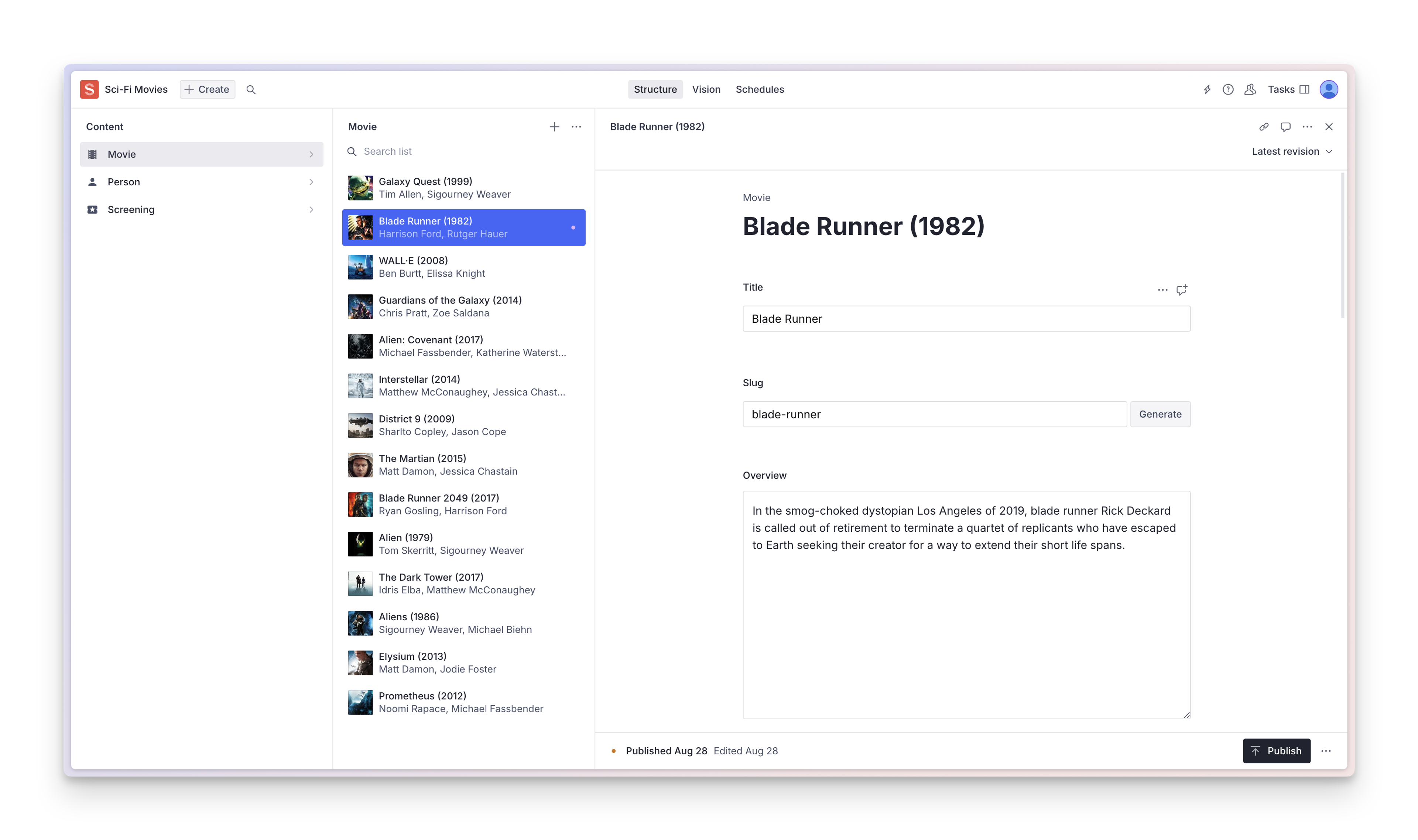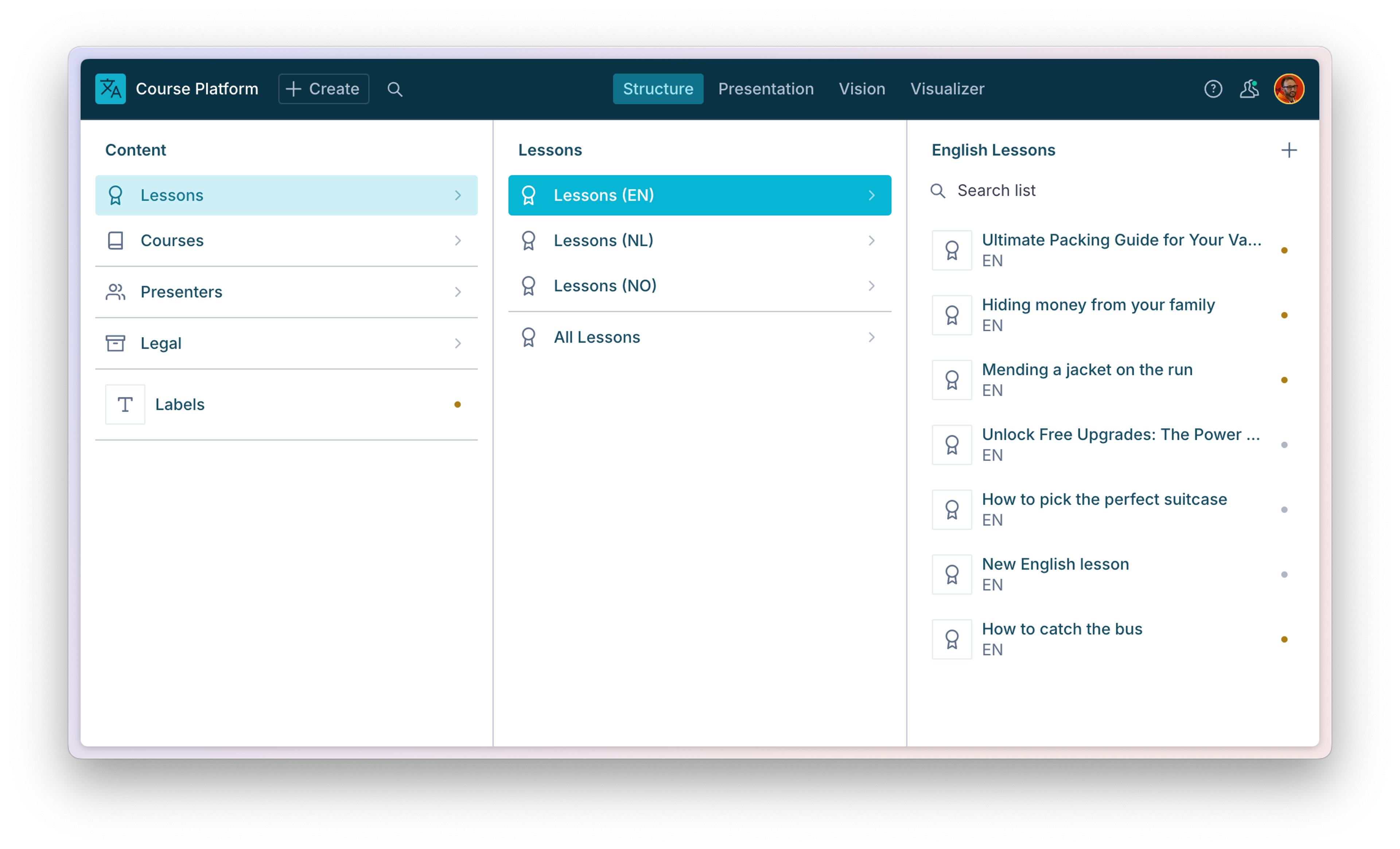Structure tool
Customize the document browsing and management experience in Sanity Studio with the Structure tool.
The Structure tool is included with Sanity Studio and allows you to customize the experience of creating, browsing, and managing documents.

Install
New projects come pre-configured with the Structure tool. For existing projects, or if it isn’t part of your Studio configuration, you can install it by updating your project’s configuration file.
// sanity.config.ts
import {defineConfig} from 'sanity'
import {structureTool} from 'sanity/structure'
export default defineConfig({
// ...
plugins: [structureTool()],
})Is Structure a tool or a plugin?
Wondering why you’re adding a tool to the plugins array? Plugins are containers for shared tools, components, and other Studio configuration settings.
You can configure the Structure tool beyond the default settings by passing a configuration object to structureTool . The Structure tool API reference describes the list of available configuration options.
Gotcha
The Structure tool's document list has a limited view of 2000 documents. If you find yourself running into this limitation, consider customizing your Structure configuration with Structure Builder to lay out documents in a more categorized way.
Customize
The Structure tool includes Structure Builder, an API that allows you to customize the way lists, documents, views, and menus are organized within Studio.

Start customizing your studio with the Introduction to Structure Builder series.
Additional resources
Was this page helpful?